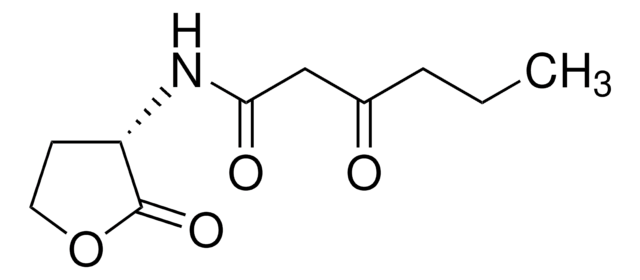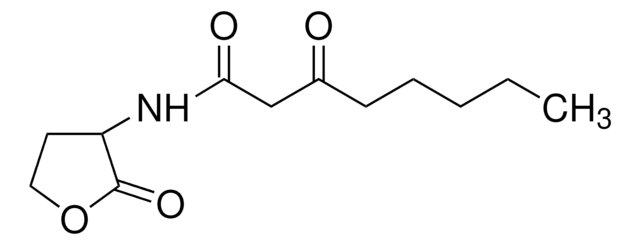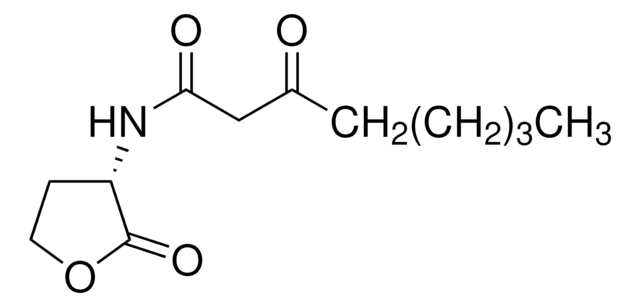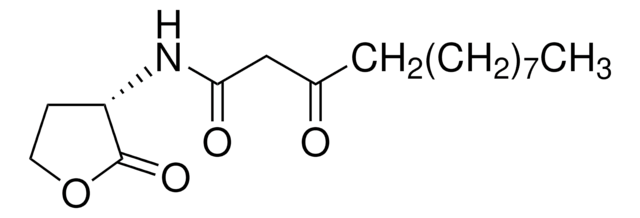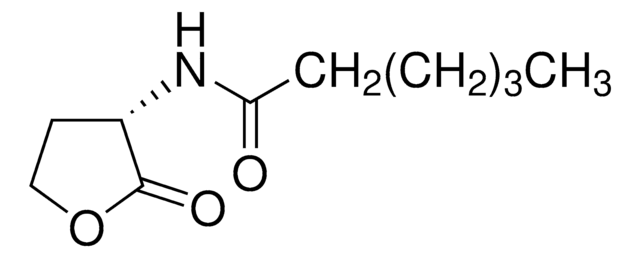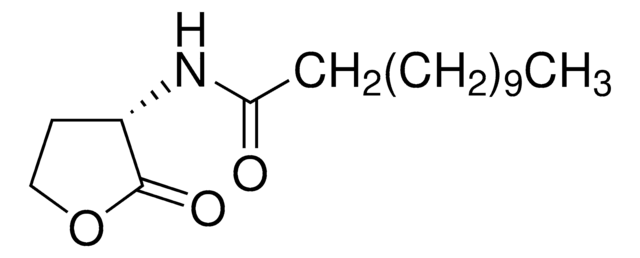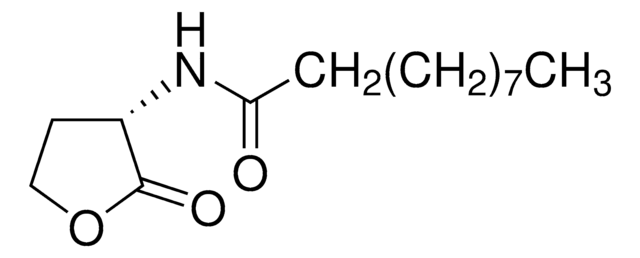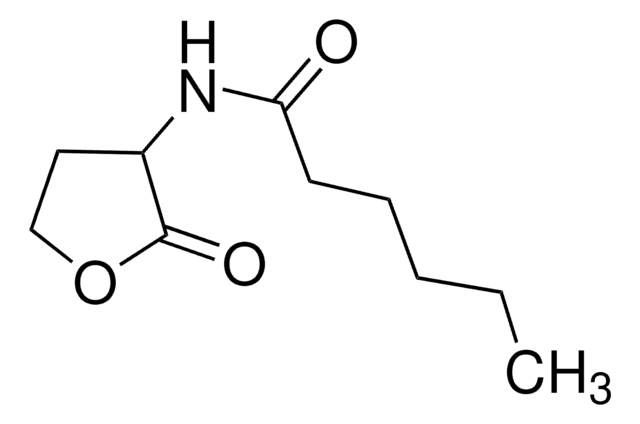Key Documents
61698
N-(3-Hydroxyoctanoyl)-DL-homoserine lactone
≥95% (sum of isomers, HPLC)
Synonim(y):
3-Hydroxy-N-(tetrahydro-2-oxo-3-furanyl)octanamide, 3-Hydroxy-C8-HSL, N-[(RS)-3-Hydroxyoctanoyl]-DL-homoserine lactone
About This Item
Polecane produkty
Poziom jakości
Próba
≥95% (sum of isomers, HPLC)
temp. przechowywania
−20°C
ciąg SMILES
O=C(CC(O)CCCCC)NC1C(OCC1)=O
InChI
1S/C12H21NO4/c1-2-3-4-5-9(14)8-11(15)13-10-6-7-17-12(10)16/h9-10,14H,2-8H2,1H3,(H,13,15)
Klucz InChI
XCZVBYOXRSFQBH-UHFFFAOYSA-N
Działania biochem./fizjol.
Kod klasy składowania
11 - Combustible Solids
Klasa zagrożenia wodnego (WGK)
WGK 3
Temperatura zapłonu (°F)
Not applicable
Temperatura zapłonu (°C)
Not applicable
Certyfikaty analizy (CoA)
Poszukaj Certyfikaty analizy (CoA), wpisując numer partii/serii produktów. Numery serii i partii można znaleźć na etykiecie produktu po słowach „seria” lub „partia”.
Masz już ten produkt?
Dokumenty związane z niedawno zakupionymi produktami zostały zamieszczone w Bibliotece dokumentów.
Klienci oglądali również te produkty
Nasz zespół naukowców ma doświadczenie we wszystkich obszarach badań, w tym w naukach przyrodniczych, materiałoznawstwie, syntezie chemicznej, chromatografii, analityce i wielu innych dziedzinach.
Skontaktuj się z zespołem ds. pomocy technicznej